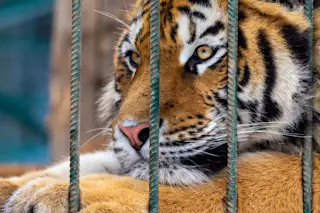The Netflix series, Tiger King, gave us an unprecedented look into the world of backyard zoos and tiger trade in the spring of 2020. The show demonstrated how people used and abused tigers for fanfare and profit, and how many facilities and breeders were ill-equipped to provide proper health and nutrition to the big cats.
But America’s backyard tiger problem existed long before it was sensationalized on television, and it’s unclear how extensive the practice of illegally keeping tigers really is. According to a BBC article, there may be more captive tigers in the U.S. than collectively remain in the wild.
It’s unknown exactly how many tigers exist in captivity in the U.S. outside of registered zoos and sanctuaries, because of lack of regulation around animal registration when they are privately purchased or bred. Some estimate that there are over 5,000 tigers living in zoos, sanctuaries or individual ownership in ...














